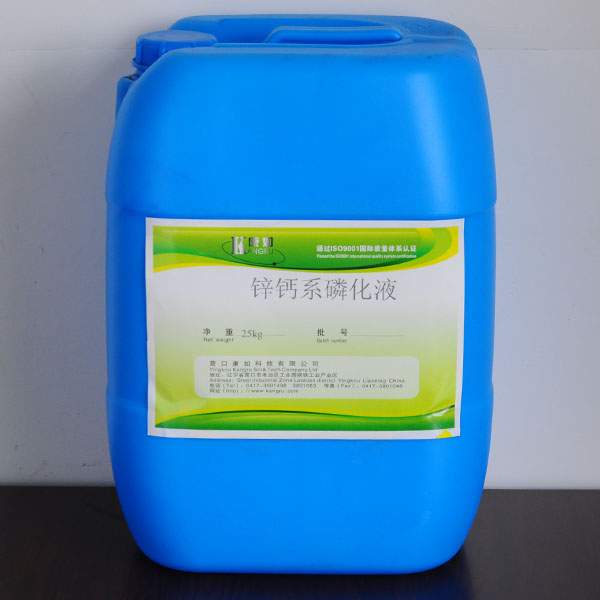
A good wire cutting fluid must have good lubricity, cleaning, cooling and rust resistance. The use of a good cutting fluid in the metal processing process is of great significance to improve product quality and processing efficiency. The specific role of cutting fluid is reflected in the following four aspects:
What are the effects of cutting fluid on machine tool processing?
1. Cooling effect: The cooling effect of the cutting fluid is to take away the cutting heat from the tool and the workpiece through the convection and vaporization between it and the cutting tool (or grinding wheel), chips and the workpiece. Due to the cooling capacity of the cutting fluid, its direct cooling effect can not only effectively reduce the cutting temperature, reduce the thermal deformation of the workpiece and the tool, maintain the hardness of the tool, extend the tool life, improve the machining accuracy, prevent the thermal expansion of the workpiece, and cool the machined surface to inhibit heat The generation of metamorphic layer.
2. Lubrication: The lubrication of the cutting fluid can reduce the friction between the rake face and the chips, and the flank face and the surface of the workpiece, forming a part of the lubricating film. Under certain conditions, the use of good cutting fluids and heavy oil cleaners can reduce the friction between the front and back of the tool, thereby reducing power, increasing tool life, and improving product finish. What is more important is to reduce the chance of generating built-up edge (ie, knife edge).
3. Cleaning function: In the metal cutting process, grease and oil stains and some small chips, metal powder, grinding wheel sticky dust, etc. are often produced, which cause mechanical scratches and wear, resulting in deterioration of the surface quality of the workpiece, tool life and machine tool accuracy Lower, which requires cutting fluid to have a good cleaning effect. When using the cutting fluid, a certain amount of pressure should be applied to improve the scouring ability and wash away the fine chips, sand particles, and binder powder in time.
4. Anti-rust effect: In the machining process, the workpiece and the machine tool are affected by the surrounding corrosive media, such as moisture, oxygen, hand sweat, acidic substances and dust in the air, which will cause corrosion. This kind of rust is particularly prominent in high temperature, high humidity seasons or humid areas. At the same time, according to the long turnaround time of metal parts processed in the workshop in our country, the cutting fluid itself must not only not corrode machine tools, tools and workpieces, but also have good anti-rust properties for metal products. In the humid and rainy season in southern my country, more attention should be paid to anti-rust measures between processes.

With the rise of modern machinery manufacturing industries such as aviation, automobile industry, petrochemical and electronics, aluminum alloy metal processing has become very common. Therefore, the choice of cutting fluid for aluminum alloy machining is very important, and good lubricity, cooling, filtering and rust resistance must be guaranteed.
Compared with most steel and cast iron materials, aluminum alloy has many obvious characteristics in physical properties: strength and hardness are much higher than pure aluminum, but compared with steel, the strength and hardness are low, and the cutting force is small. Good thermal conductivity. Because aluminum alloy is soft and plastic, it is easy to stick to the tool during cutting, forming a buildup on the tool, and welding may occur on the cutting edge during high-speed cutting, causing the tool to lose cutting ability, and affect the machining accuracy and surface roughness. In addition, the thermal expansion coefficient of aluminum alloy is large, and the heat of cutting can easily cause thermal deformation of the workpiece and reduce the machining accuracy.
Selection of cutting fluid for aluminum alloy machining
In summary, the choice of cutting fluid for aluminum alloy machining is very important, and good lubricity, cooling, filtering and rust resistance must be ensured. Therefore, the cutting fluid used for aluminum alloy machining is different from ordinary cutting fluid. A suitable cutting fluid is very necessary.
According to the different requirements of machining conditions and machining accuracy, different cutting fluids should be selected. Because high-speed machining can generate a lot of heat, such as high-speed cutting, drilling, etc., if the generated heat cannot be taken away by the cutting fluid in time, tool sticking will occur, and even a built-up edge will occur, which will seriously affect the workpiece Machining roughness and tool life, and heat will also deform the workpiece, which seriously affects the accuracy of the workpiece. Therefore, the choice of cutting fluid should consider not only its own lubricity, but also its cooling performance.
For the grinding process, the grinding debris is very small, and a lot of heat will be generated during the grinding process. Therefore, when choosing a cutting fluid, it is necessary to consider not only the lubrication and cooling performance, but also the filterability of the cutting fluid. If the selected cutting fluid is too thick and the chips cannot be deposited or filtered out in time, then the surface of the workpiece will be scratched as the cutting fluid circulates to the processing area, thereby affecting the finish of the processed surface.
Use and maintenance of cutting fluid for aluminum alloy machining
In addition to the daily maintenance of cutting fluids for aluminum alloy machining, the following points need to be paid attention to. ① Filtration: Because aluminum alloy is prone to react to produce aluminum soap under alkaline conditions, which will destroy the stability of the cutting fluid, the aluminum chips should be filtered out immediately to avoid the aluminum chips reacting with the cutting fluid and affecting the cutting The use effect and service life of the liquid. The aluminum scraps ground out during the grinding process are small and light, and it is difficult to settle down. If the filtering is not performed or the filtering is not sufficient, the aluminum scraps will be brought to the processing area along with the cutting fluid circulation system and scratch the surface of the workpiece. , Affect the gloss of the processed surface. ②pH value: Because aluminum is very sensitive to the pH value of the cutting fluid, it is necessary to regularly check the pH value of the aluminum alloy cutting fluid, and adjust it in time if abnormalities are found. Use the pH to be controlled at 8-9 to avoid excessively high pH value corroding the workpiece or too low pH value to cause bacteria to multiply and affect the stability and performance of the cutting fluid. ③Replenishing new fluid regularly: it not only ensures the good lubrication of the cutting fluid, but also ensures the good anti-rust performance, sterilization and anti-corrosion performance of the cutting fluid to extend the service life of the cutting fluid.
in conclusion
The choice of cutting fluid for aluminum alloy machining is very important. It is necessary to ensure that the cutting fluid has good lubricity and rust resistance, but also has good stability, filtration and easy maintenance. Only in this way can we process products that meet the requirements. , Minimize the cost of cutting fluid.
